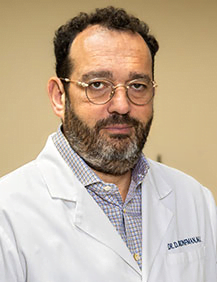The Only NYS Approved by
DOH Surgical Facility
*Same Day Appointments & Walk-Ins Welcome
The Only NYS Approved by
DOH Surgical Facility
*Same Day Appointments & Walk-Ins Welcome

Ovarian torsion is a gynecological emergency that requires immediate surgery. This very rare condition results from the rotation of the ovary along its pedicle that holds it in place. Such a rotation blocks the ovarian artery and sometimes the ovarian vein as well to break off the blood supply to the ovary resulting in severe abdominal pain. Fortunately, this condition isn’t very common, with only about 3% of the gynecological emergencies accounting from ovarian torsion. 70% of the ovarian torsion cases occur in 20 to 39 year old women, which means women in the reproductive age group are at a higher risk.
Ovarian torsion is generally preceded by an ovarian mass. The corpus luteum is a small structure that forms in the ovary after the ovum that was released fails to fertilize. In reproductive women, this process occurs almost every month, which may result in the corpus luteal cysts that sometimes grow into large masses. Such large cysts and ovarian tumors may produce a mass effect on the ovary to result in torsion. Some other causes of ovarian torsion also include internal bleeding and over stimulation of the ovaries.
The commonest and often very first symptom of ovarian torsion is acute and sudden abdominal pain. Usually, the pain appears in the lower abdomen on the affected side alone. Almost 70% of the women with ovarian torsion also experience nausea and vomiting. Generally, ovarian torsion involves only one ovary at a time and tends to affect the right ovary more often.
Early diagnosis of ovarian torsion is extremely important to salvage the ovary and a delay may result in necrosis and infarction of the ovarian tissue. Color Doppler ultrasonography (BrooklynOB/GYNservices) is effective in locating any discrepancies in the blood flow to and from the ovaries and hence helps with its diagnosis too. A CT scan or MRI helps confirm the diagnosis of ovarian torsion, although in most cases an ultrasonography is enough to provide a diagnosis. However, since this is a very uncommon gynecological condition it rarely figures in the differential diagnosis of women with abdominal pain. Nonetheless, women with large ovarian growths, pregnancy, or history of pelvic surgery have an increased risk of ovarian torsion and should be investigated accordingly.
The first line of treatment for ovarian torsion is always emergency surgery. Laparoscopic surgeryis performed to disentangle the twisted ovary and sometimes the adjoining fallopian tube. Additionally, oophoropexy is performed to fix the ovary in place as the affected ovary has a high chance of twisting again. Oophoropexy prevents successive torsions. At times, when the torsed ovary experiences a disturbed blood circulation for too long, tissue death in the form of infarctions and necrosis is likely to occur. Such ovaries need to be removed surgically.
The prognosis of ovarian torsion is extremely good if the condition is diagnosed and treated promptly. However, in most women the ovary is already necrosed by the time they are diagnosed with ovarian torsion. As a result, the ovarian salvage rate is as low as 10% among women with ovarian torsion. As for fertility, since ovarian torsion tends to affect only one ovary the fertility rate isn’t affected significantly as there is still the other ovary that’s functioning normally.

Dmitry Bronfman, MD, is a board-certified gynecologist who specializes in all aspects of contemporary women’s health, preventive medicine, pelvic pain, minimally invasive and robotic surgery, and general, adolescent, and menopausal gynecology.
Brooklyn Abortion Clinic